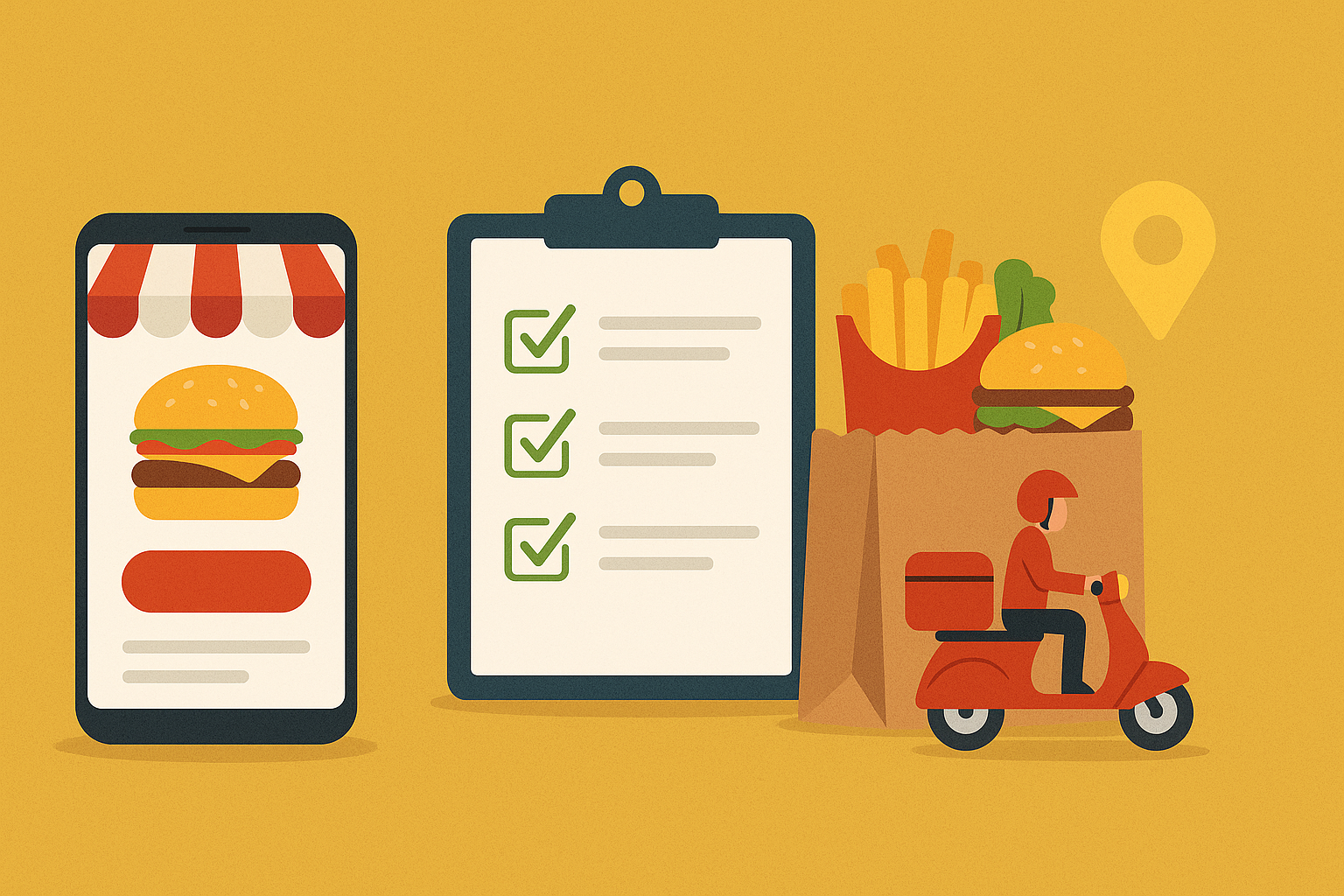According to analyst forecasts, the global restaurant delivery software market will grow from $3.3 billion to $9.8 billion by 2033. There are plenty of reasons for this growth.
Today, restaurant owners face real challenges: high aggregator commissions eat into profits, managing orders from different platforms turns into chaos, and control over their own customers is lost between Uber Eats and DoorDash. Add to this the rising labor costs, strict service policies regarding order errors, and difficulties in tracking couriers.
This is why an entire category of restaurant delivery systems and delivery management software has emerged to solve these pain points comprehensively. AI integration for demand forecasting, route automation, commission-free ordering websites, real control over customer data, menus that can be changed in seconds based on inventory levels. If you manage or have ever managed a restaurant, you probably already see this as a magic wand that will solve all problems.
In this article, we’ll look the 10 best delivery management systems worth adopting in 2026 that can implement what we’ve listed above. Each offers a unique approach to solving the daily challenges of the restaurant business, so choose carefully.
Top 10 Delivery Management Solutions for 2026
1. Delivety
Delivety stands out from competitors with its comprehensive approach to restaurant management. It’s a complete ecosystem that includes a POS system, Kitchen Display System (KDS), menu builder, and recipe editor that work on any device.
The main advantage is an optimized ordering website that allows direct orders without any aggregator commissions. This means restaurant owners maintain full control over their customers and margins. The system is designed so all components work together seamlessly: orders from the website automatically flow to the kitchen display, sync with the POS and recipe management system.
Delivety understands that every restaurant is unique, so the platform provides flexibility in menu settings, ingredient management through the recipe editor, and complete control over delivery processes. For restaurateurs looking to break free from expensive aggregators and build their own profitable delivery channel, Delivety offers the most balanced solution on the market.
2. Toast POS
Toast positions itself as a powerful POS system with advanced online ordering capabilities. Particularly suitable for restaurants already using their point-of-sale system and wanting to integrate delivery. Strengths include deep integration of all processes and detailed analytics. The system works well for medium and large establishments with established processes. Offers customer loyalty and marketing tools that help retain regular guests.
3. Square Online
Square is known for its ease of implementation and affordable pricing. An ideal option for small restaurants and cafes just starting with delivery. The system sets up quickly, has an intuitive interface, and doesn’t require special technical knowledge. Especially convenient for businesses already using Square for payment processing – everything works in a single ecosystem without unnecessary integrations.
4. UpMenu
UpMenu focuses on increasing direct orders and reducing dependence on aggregators. The platform offers creation of your own website and mobile app without order commissions. A strong point is CRM and marketing automation tools that help build long-term customer relationships. Suitable for establishments ready to invest in developing their own brand and customer base.
5. HungerRush 360
HungerRush offers a comprehensive solution with emphasis on creating personalized guest experiences. The system collects customer preferences and helps form relevant offers. Includes powerful analytical tools for tracking everything from orders to inventory and labor costs. Especially valuable for restaurants with high delivery volumes requiring detailed operational control.
6. Enatega
A solution for restaurants, cloud kitchens, and grocery delivery services. Enatega specializes in courier route optimization and real-time order tracking. The system helps reduce logistics costs and minimize delivery errors. Suitable for businesses with their own delivery service wanting to organize courier operations as efficiently as possible and lower operational costs.
7. Tookan
A flexible delivery management platform with emphasis on automation. Tookan offers smart order distribution among couriers, automatic route planning, and detailed efficiency analytics. The system easily integrates with other solutions and suits restaurants of various sizes. Especially useful for establishments with unstable order flows requiring dynamic delivery resource management.
8. Onfleet
A specialized solution for last-mile logistics optimization. Onfleet helps plan the most efficient routes, automatically distributes orders, and provides customers with accurate delivery time information. A strong point is customer transparency: they receive SMS notifications and can track the courier on a map in real-time. Ideal for restaurants where delivery speed and accuracy are critically important.
9. Owner.com
A platform for restaurants wanting to increase online sales and minimize commissions. Owner.com focuses on creating a powerful proprietary ordering channel with marketing and customer engagement tools. The system includes ready-made website templates, social media integration, and loyalty program capabilities. Suitable for ambitious establishments viewing delivery as a primary growth channel.
10. Circuit for Teams
A solution for small and medium-sized businesses with emphasis on ease of use. Circuit helps efficiently organize courier operations even without large technology investments. The system automatically builds optimal routes, considering traffic conditions and order priority. Especially convenient for teams with 2-10 couriers needing basic but reliable delivery management tools.
FAQ: Answers to Common Questions
- Do I need a separate delivery management system if I work with aggregators?
Yes. A restaurant delivery management system allows you to centralize all orders in one place. Also, your own system helps build a customer base and gradually reduce dependence on expensive aggregator commissions, which can reach 30%. - How much does implementing restaurant delivery management software cost?
Prices start at just $9 per month (for Delivety), depending on functionality, business size, and provider. - How do I choose the right system for my restaurant?
Start by analyzing your needs: how many orders you process daily, whether you have your own couriers, what your technology budget is. Simple restaurant delivery systems like Square or Circuit suit small establishments. If you’re planning to scale delivery and build your own brand with important analytics and automation – look at comprehensive platforms like Delivety or UpMenu. - Is it difficult to train staff to work with a new system?
Modern restaurant delivery systems are designed with convenience in mind. Basic training typically takes 1-2 days for kitchen staff and managers. Most platforms have intuitive interfaces and provide training materials.
How Restaurant Delivery Management Systems Are Changing Business
The data show a clear trend: establishments with their own ordering channels and efficient logistics demonstrate 40-60% higher profitability compared to those fully relying on aggregators.
The main thing – don’t postpone this decision indefinitely. The food delivery market is growing at 12-16% annually, and competition is only intensifying. Success in food delivery in 2026 will belong to those who control technology, not the other way around.
Published: October 26, 2025




